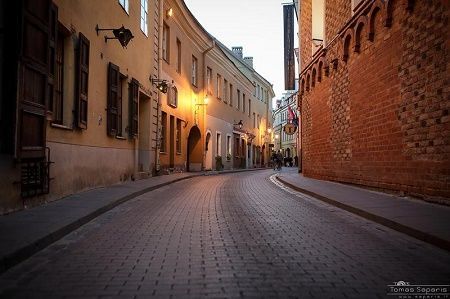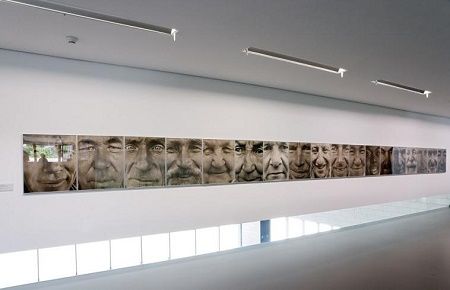Article
Lithuania: A Rising Star for Tourists
Author(s):
If you haven't been to Lithuania in a while, it's worth a trip. The country has pumped major investment into its tourism industry, and the results are spectacular.

For a look at a less-traveled, but dynamic, historically important, and scenic region in Europe, visit Lithuania. As a result of seven years of major investment in tourism infrastructure and in the refurbishment of historical and cultural sites, the small Eastern European country is primed for visitors and getting attention.
In 2015 Lonely Planet ranked Lithuania as the third-best travel destination, National Geographic named Vilnius as a Top 10 winter trip and BuzzFeed put Vilnius and Lithuania on its Top 18 Places You Must See in 2016.
Lithuania, not much larger in square miles than the state of West Virginia, features centuries-old castles, picturesque Old Towns, notable museums, and enough outdoor activities to sate an avid enthusiast. You can sail lakes, canoe rivers, zip down bobsled runs, and hike forests.
For those interested in Jewish heritage, the Eastern European country is much more welcoming than when your great-grandparents, grandparents, and their friends fled decades ago. After spending millions to refurbish Jewish cultural sites, Lithuania, in December 2015, created a Jewish Cultural Route Association that, in part, informs visitors of Jewish heritage routes and destinations.
Vilnius

Contemporary Arts Center in Vilnius
On a stroll through Vilnius’ Old Town, an UNESCO World Heritage site, walk down Pilies Street lined with cafes, pubs, and centuries-old buildings; tour the campus of Vilnius University, established in 1579; and visit the Gate of Dawn, a 16th century city gate and chapel whose Virgin Mary portrait attracts pilgrims who believe in its healing powers.
In Vilnius, you can also admire the out-sized art and sculpture in the Park of Europe, browse contemporary pieces in the Contemporary Arts Centre and float over the city in a hot air balloon.
Trakai

Trakai Castle
Built on an island in GlavÄ— Lake, Trakai Castle, one of the most visited sites in Lithuania, dates to 1410. The imposing Gothic-style edifice, with its towers, turrets, wooden bridge, and stained glass, once served as the residence of Lithuania’s Grand Dukes. The restored castle houses the Trakai History Museum, hosts concerts and medieval tournaments, and anchors the popular resort town of Trakai.
Kaunas
In Kaunas, Lithuania’s second-largest city, walk its Old Town, visit the National Art Museum showcasing Lithuanian painters as well as folk art and the Kaunas Devils Museum, an odd—or unique—display of 1,000 of these creatures. In 2015 Kaunas earned the distinction of becoming part of the UNESCO Creative Cities Network.
Not far from Kaunas, visit the 17th century, Baroque-style Pazaislis Monastery and church, among the largest such complexes in Lithuania. The facility features impressive murals and stages a popular music festival every summer.
Jewish History
Jews have lived in Lithuania for more than 500 years. Many fled in the 19th and early 20th centuries and many perished during World War II. As a result of Lithuania’s 2011 law compensating Jewish communities destroyed during World War II, millions of dollars have been spent rebuilding Jewish religious and cultural institutions.
Vilnius: The Choral Synagogue, Tolerance Center, and Holocaust Exhibition are some of Vilnius’ Jewish sites. Around Vilnius and Kaunas some old wooden synagogues, many not yet restored, still stand.
Kaunas: The Ohel Jakov Choral Synagogue, built in 1871, serves as a memorial to the estimated 50,000 Lithuanian Jewish children killed during the Holocaust. The exact numbers are not known. Tour the Ninth Fort, which under the Nazis became an extermination camp for Jews. At Sugihara House, learn of the bravery of Chiune Sugihara, the Japanese Vice Consul to Lithuania 1939-1940, who saved thousands of Jews by issuing visas for them against the orders of the Japanese Embassy.

Seduva (above): The Lost Shtetl of Seduva, dedicated October 2015, is a powerful memorial to that town’s lost Jews, many murdered by the Nazis in 1941. The Seduva Memorial Fund, a private endeavor, has restored the graveyard and created memorials at the site of mass graves. A museum complex is under construction.
What are your favorite Lithuanian travel destinations? What’s on your Lithuanian to-do list? Comment below or connect with me on Twitter, @familyitrips.
Photos: Lithuanian Department of Tourism; Seduva Jewish Memorial Fund




